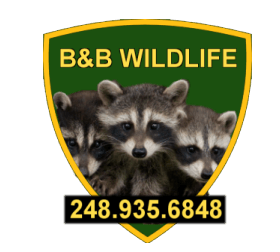Skunks are nocturnal and tend to move about at night.
Skunks are mammals and are highly adaptable.
A skunk’s spray can travel as far as 23 feet.
Skunks Skunks Skunks – Information on Skunks
 Interesting Facts on Skunks and Their Behaviour:
Interesting Facts on Skunks and Their Behaviour:
- Skunks are legendary for their powerful predator-deterrent—a hard-to-remove, horrible-smelling spray. A skunk’s spray is an oily liquid produced by glands under its large tail.
- Skunks have poor to fair senses of hearing and smelling. They also tend to be somewhat clumsy runners due to their short, stocky front legs.
- Skunks have been known to be carriers of rabies. This will happen if they are bitten by or eat an animal that is affected.
- Skunk spray does not carry rabies.
- Skunks are not all bad, they like to eat the garden bugs and slugs that damage your crops.
- Skunks can grow anywhere between 16″ – 27″ in length and generally weigh from just over 1 lb. to just over 6 lbs.
- Skunks can spray up to 4-7m (13-23 ft) in a favorable wind-although they are usually only accurate for up to about 2m (6.5ft).
- Skunks are found in a wide variety of habitats, and are common in many urban areas.
More Facts about Skunks
Although skunks are commonly considered a nuisance, their tendency to consume insects and rodents harmful to agriculture crops may benefit farmers. Unfortunately, these same activities can also create additional damage situations. Skunks eat the eggs and young of ground nesting birds. Skunks may also damage vegetable gardens, kill and eat domestic poultry and their eggs. Occasionally they may damage beehives while trying to feed on the bees. Skunks disrupt unsecured garbage cans and consume pet food that is left outdoors. They may also damage lawns, athletic fields, and golf courses by digging up turf as they search for food.
Skunk denning activities can also result in damage. Dens located under buildings can be a nuisance to building occupants should the skunk release its musk. Lastly, skunks can also be a major disease factor. In many states skunks are the primary wildlife carrier of rabies. They may also be infected with tularemia, distemper, Aleutians disease and several parasites including fleas, lice, mites, ticks, roundworms, tapeworms, and flatworms.
Skunks are solitary animals. They come together only during the breeding season and during winter when several may be found denning together. Skunks are characterized as being shy, secretive animals. They discharge their scent when disturbed, cornered, or harassed. Prior to releasing scent, the skunk often will stamp its forefeet rapidly while lifting its plume over its back.
Skunk spray causes no real damage to its victims, but it sure makes them uncomfortable. It can linger for many days and defy attempts to remove it. As a defensive technique, the spray is very effective. Predators typically give skunks a wide berth unless little other food is available.
There is no one size for skunks. They can vary in size from the Spotted Skunk that can be the size of a squirrel all the way up to the Hog-nosed Skunk, which can be the size of a small lap dog. Most skunks sport the almost universally recognized pattern of a black body with white stripes. The exact strip pattern can vary with each individual animal, and contrary to folklore it can’t be used to determine the skunks gender. Less commonly known is that they can occasionally have a brown body and white stripes or a grey body and white stripes. Some may even be completely white, without being an albino, or a solid black. Unlike most small animals that try to blend with their surroundings to avoid predators, skunks want to be seen. Much like the bright colors of poison dart frogs in the Amazon rain forest, skunks deliberately standout to warn other animals to stay away.
Skunks become a nuisance when their burrowing and feeding habits conflict with humans. They may burrow under porches or buildings by entering foundation openings. Garbage or refuse left outdoors may be disturbed by skunks. All skunks seem able to dig their own burrows but will also use abandoned dens of other animals, hollow logs, wood or rock piles. They also burrow under buildings, stone walls, hay or brush piles and trees or stumps, elevated sheds, openings under concrete slabs and porches and access to crawl spaces under houses.
Skunks in Your House or Attic?:
B&B Wildlife Removal Service understands that skunks can be a bit intimidating with their reputation for the foul-smelling spray. Skunk denning activities can also create great damage. Skunks can also be a major disease factor. We humanely trap the skunks and relocate them to a safe place.
Skunks and Rabies:
Rabies may be carried by skunks on occasion. Skunks are the primary carriers of rabies in the Midwest. When rabies outbreaks occur, the ease with which rabid animals can be contacted increases. Therefore, rabid skunks are prime vectors for the spread of the virus. Avoid overly aggressive skunks that approach without hesitation. Any skunk showing abnormal behavior, such as daytime activity, may be rabid and should be treated with caution.
Call B&B Wildlife Removal Services TODAY!
248-935-6848


